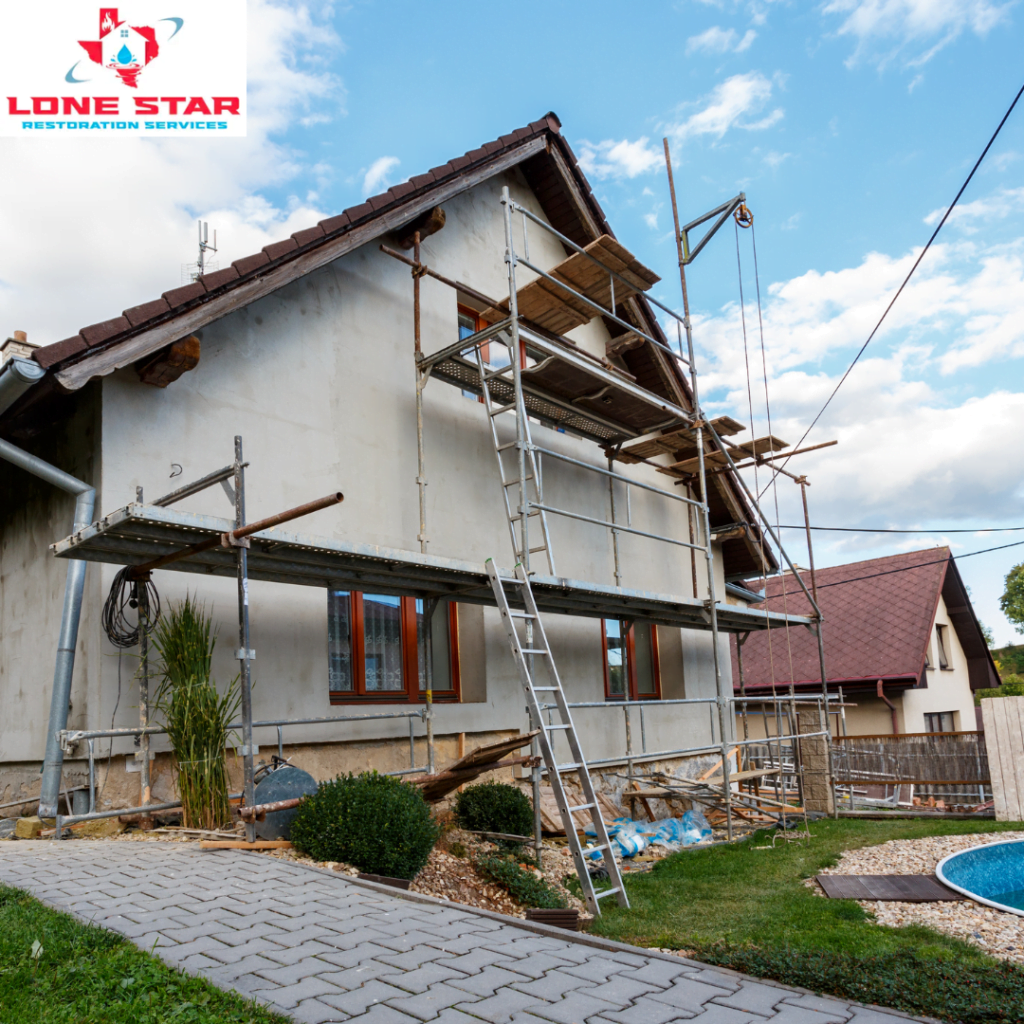Restoration Safety: Ensuring Your Well-being and Property Protection
When it comes to restoration projects, the allure of transforming a space can be captivating, but ensuring safety should always be the paramount concern. Restoration endeavors involve a range of potential hazards that can pose risks to both individuals and the property itself. From structural instability to exposure to harmful substances like lead paint and asbestos, the restoration process can be fraught with dangers.
However, by embracing a safety-first approach, you not only shield yourself from harm but also safeguard the integrity of your property. This blog delves into the crucial topic of restoration safety, shedding light on the vital precautions and practices that must be adopted. By understanding and implementing these safety measures, you can embark on your restoration journey with confidence, knowing that you’re protecting both your well-being and the longevity of your cherished spaces.
1. Assessing Risks and Planning Ahead:
Before you even pick up a tool, taking the time to assess potential risks and plan your restoration project thoroughly can significantly mitigate hazards. Each project is unique, presenting its own set of challenges. A meticulous evaluation of the project site is essential to identify any existing dangers. This could range from unstable structures to the presence of toxic substances like lead or asbestos. By conducting a comprehensive risk assessment, you’re equipping yourself with the knowledge needed to make informed decisions and take the necessary precautions.
Planning is equally vital. Creating a detailed restoration plan not only outlines the steps you need to take but also highlights safety measures to incorporate. Your plan should address how to handle hazardous materials, secure the site, and execute tasks without compromising safety. With a well-structured plan in hand, you’re not only ensuring your own well-being but also setting the stage for a successful and secure restoration journey. Remember, foresight and careful consideration are your allies in keeping potential risks at bay.
2. Protective Gear and Equipment:
Restoration work often involves exposure to various physical and environmental risks. To shield yourself from harm, the right protective gear and equipment are your first line of defense. Proper gear not only reduces the likelihood of injury but also ensures that you can work confidently and efficiently.
When engaging in restoration tasks, donning the appropriate protective gear is non-negotiable. Safety goggles safeguard your eyes from debris, dust, and chemicals, while gloves shield your hands from sharp objects and harmful substances. Respirators are essential when working in environments with poor air quality or when dealing with airborne particles. Hard hats offer protection against falling objects in areas where structural stability might be a concern.
Alongside personal protective gear, using specialized equipment is crucial. Sturdy ladders and scaffolding enable safe access to elevated areas, reducing the risk of falls. Harnesses provide added security when working at heights. The right tools for the job ensure that tasks are performed efficiently and without unnecessary strain, reducing the chances of accidents caused by inadequate equipment.
By embracing the use of protective gear and the right tools, you’re taking proactive steps towards ensuring your safety. Investing in proper equipment not only safeguards your well-being but also enhances your overall efficiency, allowing you to tackle restoration projects confidently and effectively.
3. Proper Ventilation and Air Quality:
Restoration projects often involve tasks that release dust, fumes, or other airborne particles. Ensuring proper ventilation and maintaining good air quality is crucial for the health and safety of everyone involved. Inadequate ventilation can lead to the accumulation of harmful substances, causing respiratory issues and other health concerns.
When working in enclosed spaces or areas with poor air circulation, it’s essential to create proper ventilation. Use fans, exhaust systems, or open windows to facilitate the flow of fresh air and disperse airborne particles. Adequate ventilation not only reduces the concentration of hazardous materials but also makes the work environment more comfortable.
For tasks involving chemicals or substances that emit fumes, wearing a suitable respiratory protection device is recommended. Respirators with the appropriate filters help prevent inhalation of harmful particles, ensuring that you’re breathing clean air even in potentially hazardous conditions.
By prioritizing ventilation and air quality, you’re not only safeguarding your respiratory health but also creating a more comfortable and conducive working environment. Proper airflow reduces the risk of exposure to harmful substances and contributes to the overall safety of your restoration project.
4. Handling Hazardous Materials:
Restoration often involves dealing with hazardous materials like asbestos, lead-based paint, or mold. Improper handling of these materials can lead to serious health risks for you and others around you. It’s crucial to follow proper protocols for containment, removal, and disposal to prevent contamination.
Before starting any restoration work, identify if there are hazardous materials present. If such materials are detected, consult with experts and follow guidelines for safe handling. Use protective gear and equipment, such as coveralls and respirators, to minimize exposure.
When removing or disturbing hazardous materials, contain the area to prevent the spread of particles. Utilize methods like wetting down surfaces to minimize dust generation. Properly seal and dispose of materials according to local regulations to prevent environmental harm.
Adhering to proper procedures when dealing with hazardous materials is not only a matter of personal safety but also a responsibility towards the environment and the community. By treating these materials with care and respect, you’re contributing to the overall well-being of everyone involved.
5. Electrical and Structural Safety:
Safety in restoration extends beyond personal protective gear—it also involves ensuring the safety of the space you’re working in. Before initiating any restoration project, thoroughly evaluate the structural integrity of the area. Check for signs of damage, such as cracks, sagging, or weakened supports. Any structural concerns should be addressed before starting work to prevent accidents or collapse.
When working with electricity, always prioritize safety. Turn off circuits and disconnect power sources before beginning any tasks that involve electrical components. If you’re unsure about electrical work, consider hiring a professional electrician to ensure proper handling and prevent electrical accidents.
In areas prone to moisture or water damage, exercise caution to prevent electrical hazards. Use ground fault circuit interrupters (GFCIs) to reduce the risk of electric shock. Keep electrical tools and cords away from water or damp conditions.
By addressing both structural and electrical safety, you’re ensuring a secure environment for yourself and your team. A thorough assessment and adherence to safety guidelines reduce the likelihood of accidents and create a solid foundation for a successful restoration project.
6. Emergency Preparedness:
No matter how well you plan and prepare, emergencies can still occur. Having a well-defined emergency plan in place is crucial to swiftly and effectively respond to unexpected situations. Make sure all team members are aware of the plan and know the location of emergency exits, first aid kits, fire extinguishers, and other safety equipment.
Keep a fully stocked first aid kit on-site and ensure that everyone knows how to use it. Familiarize yourself with basic first aid procedures to address minor injuries that might occur during restoration work.
Regularly review and update your emergency plan as needed. Conduct drills to ensure that everyone knows their roles and responsibilities in case of an emergency. By being prepared, you’re minimizing the impact of unforeseen events and prioritizing the safety of all individuals involved.
7. Training and Education:
Investing in proper training and education is essential to maintaining a safe restoration environment. Attend workshops, seminars, and courses related to restoration safety and techniques. Stay informed about the latest safety regulations and guidelines in the restoration industry.
Encourage ongoing learning among your team members. Provide resources and materials that promote best practices for safety. Foster a culture of continuous improvement, where everyone is committed to upholding the highest safety standards.
By continuously enhancing your knowledge and skills, you’re equipping yourself to handle restoration tasks with confidence and competence. Education empowers you to make informed decisions and effectively manage potential risks.
8. Hiring Professionals:
For complex restoration projects or those involving hazardous materials, enlisting the expertise of restoration professionals is a prudent choice. Professionals have the experience, training, and specialized equipment necessary to handle intricate tasks safely and efficiently.
By hiring professionals, you’re not only prioritizing safety but also ensuring that the restoration is carried out to the highest standards. Professionals are well-versed in industry regulations and guidelines, reducing the risk of accidents or errors.
When considering whether to hire professionals, assess the complexity of the project and the potential risks involved. While DIY projects have their place, recognizing when professional intervention is needed is key to maintaining a safe restoration environment.
Conclusion:
Restoration safety is not an option—it’s a fundamental aspect of any successful restoration project. By adhering to safety protocols, wearing the right gear, and implementing best practices, you’re safeguarding both yourself and the spaces you’re working on. Remember that a safe restoration environment doesn’t just protect you—it ensures the longevity of your project and contributes to the overall well-being of all involved.
As you embark on your restoration journey, make safety a priority at every step, and let it guide you toward successful and secure outcomes.





